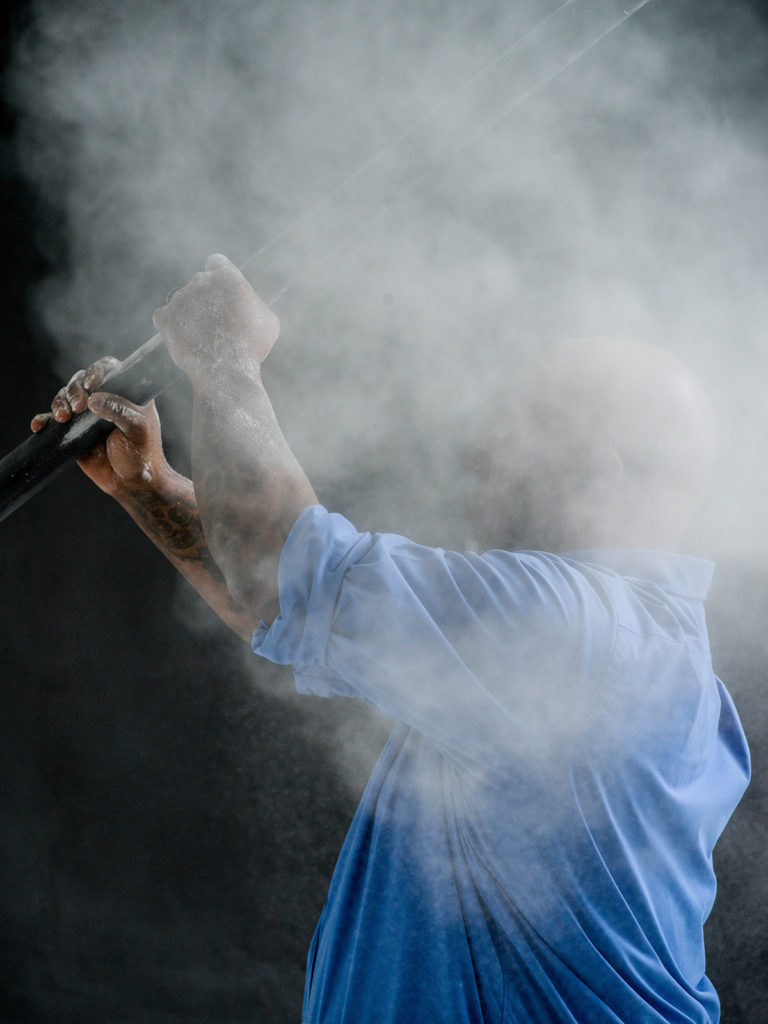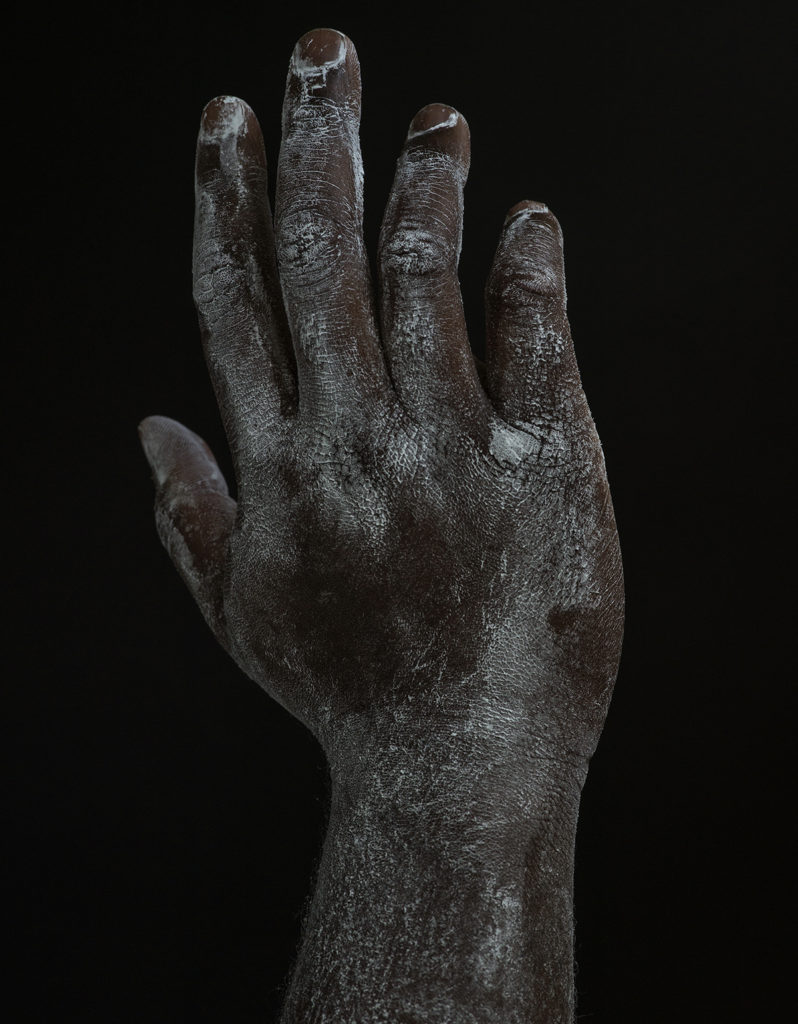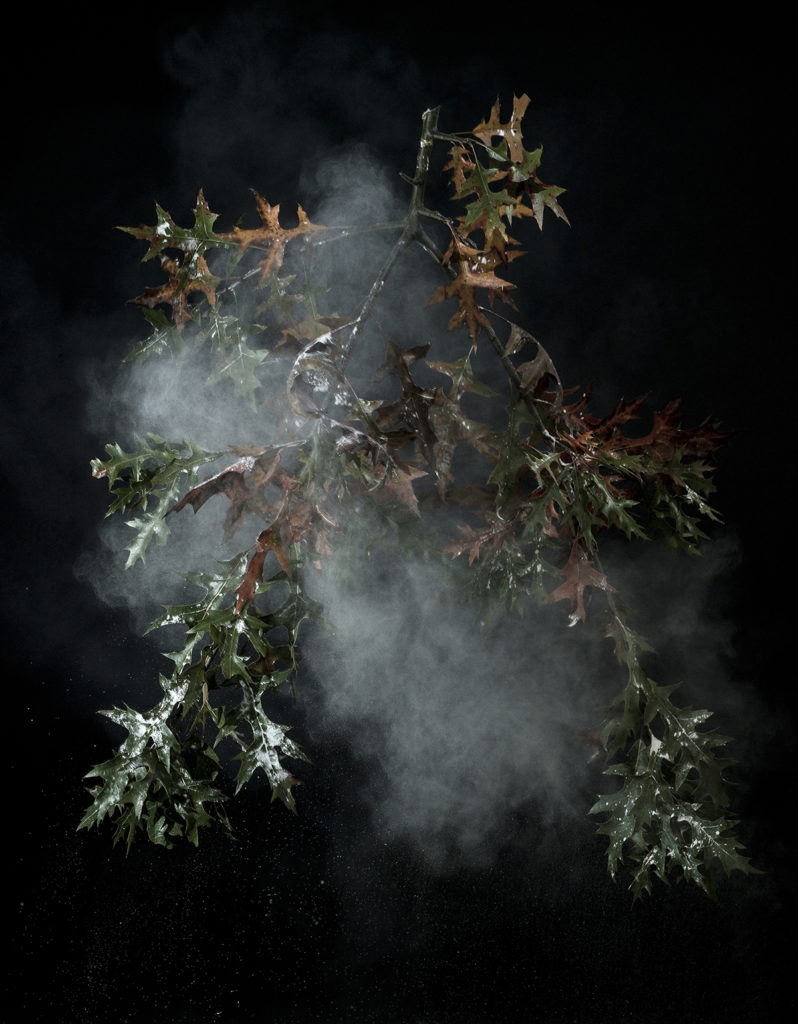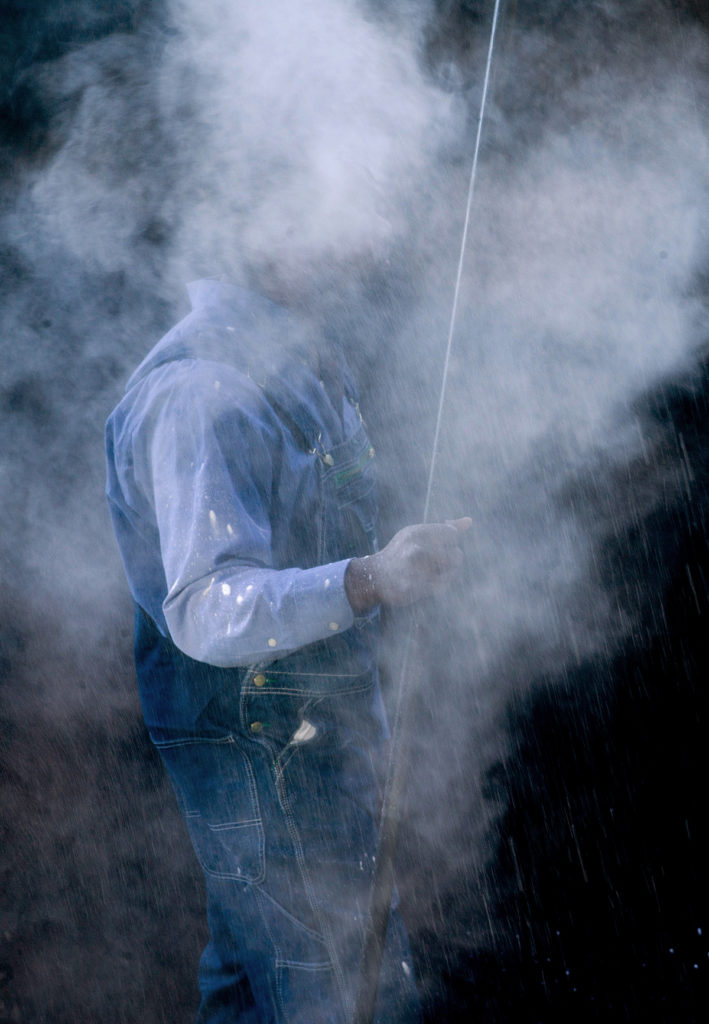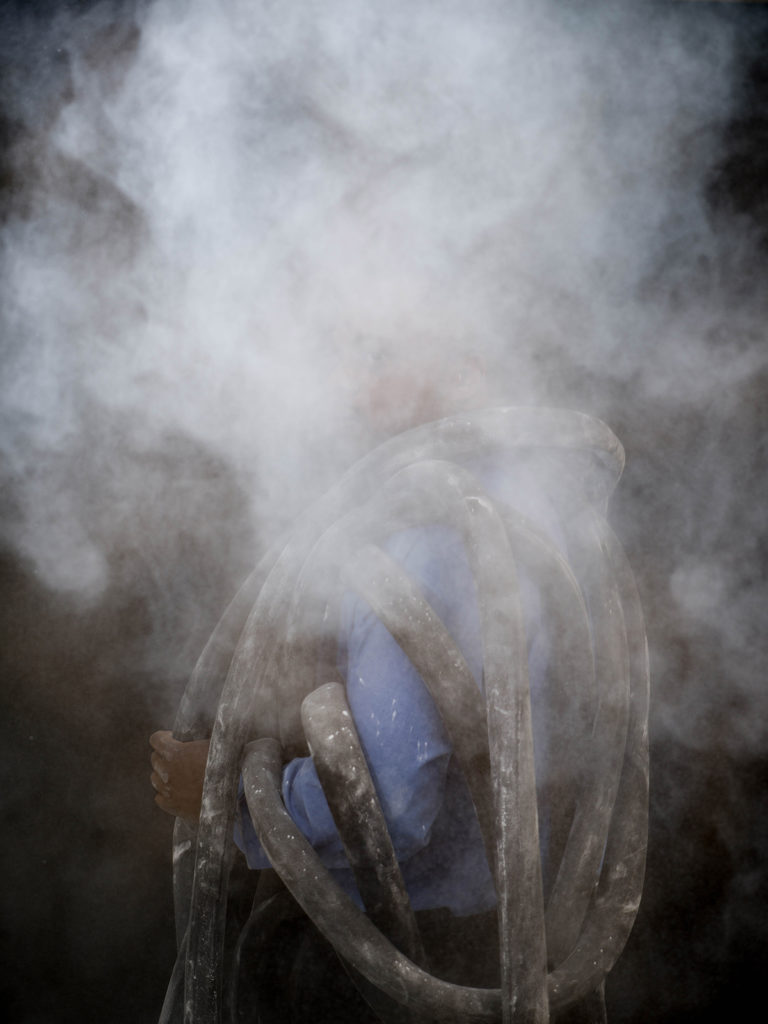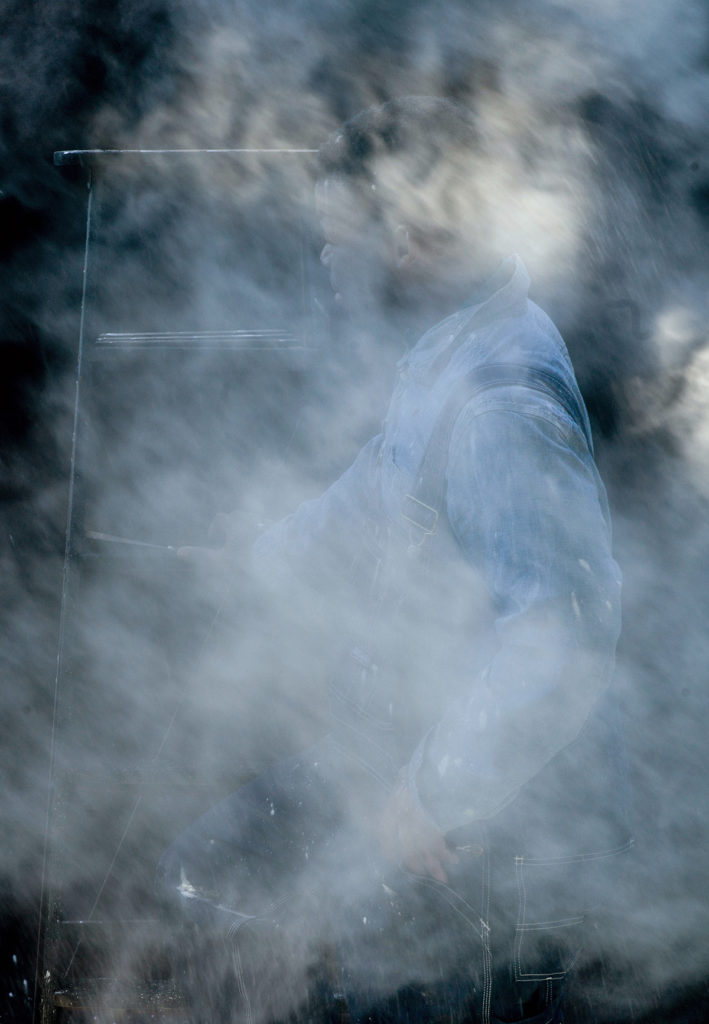Dust to Dust
Posted on December 9, 2021
Tunnelitis, an exhibition of photographs by Raymond Thompson, Jr., at Studeō PAR- uncovers an obfuscated history.
“Overall, it’s kind of a quiet show, if that makes sense,” says Jonathan Sears, executive director of PAR-Projects. “There’s a lot of dust in the air — from the pieces. It’s almost cloud-like.”
The pieces he’s referencing are the photographs by Raymond Thompson, Jr., that make up Studeō PAR-‘s current exhibition, Tunnelitis, an examination of the Hawks Nest mining crisis.
“In the 1930s, migrant laborers came from all over the region to work on the construction of a three-mile tunnel to divert the New River near Fayetteville, WV,” writes Thompson in his artist’s statement. “During the process, workers were exposed to pure silica dust due to improper drilling techniques. Many developed a lung disease known as silicosis, which is estimated to have caused the death of nearly 800 workers. Up to two-thirds of those workers were African American.”
Thompson continues: “Besides a small plaque at the Hawks Nest State Park, which lists a significantly lower number than the actual number killed, there is very little to mark the site. There is also sparse visual documentation available about the event. There has been an effort to erase this tragic moment in history from the memory of West Virginia.”
That sparse documentation and the erasure it allowed compelled Thompson — a visual journalist — in pursuing the work.
“To find source images and inspiration for all of this, he was going to archives and digging through microfilm,” says Sears. “He was like, Man, there were only like eight pictures, period. And they were like: Take them and go. Why are you here digging into the past?“
Using his deep reporting and the few primary sources available, Thompson worked to recreate the workers’ experience — which was, to say the least, not the focus of those sources — with an artist’s eye. “The few people caught in the photographic archive were often nameless and voiceless workers,” he writes. “Specifically, I’m looking at what has been left out of African-American visual history, which to date has mainly been documented with a colonial gaze.”
“When people are seeing the work, I can see them trying to figure out why they’re looking at it. It’s obviously not just images about Black men covered in powder; it’s obviously from a place,” says Sears. “The hope is that it will resonate enough to have that at-home curiosity. That’s why we named it Tunnelitis — it’s a very specific word related to that tragedy. If you were to Google that, I believe that’s all that will come up: information about Hawks Nest. It’s a nickname for the condition.”
As far as how this work made its way from West Virginia, Sears knew it was what he wanted to show as soon as he heard the 2020 FotoFocus Biennial theme, light&. “He’s putting together a narrative about people who are losing life in caves,” says Sears. “And that is the complete opposite of light&.”
But their collaboration goes back about four years, when Sears was curating the show Badge of Honor at Kennedy Heights Arts Center. “I was looking for ways to represent struggle, but not being heavy handed with it,” Sears says. “I scoured the internet until I found his website, and went, Oh, yeah, this is the guy.” Sears drove to West Virginia to meet Thompson (who is now a photojournalism professor at The University of Texas at Austin and was named to the inaugural Silver List), and they’ve been in contact ever since.
“He’s not afraid to experiment,” says Sears. “His MFA thesis involved him growing tobacco and then doing photo prints directly on tobacco leaves, which are pretty sizeable, trapping them in glass so they don’t fall apart — knowing that they’re going to completely disintegrate.”
PAR-Projects has undergone something of a transformation in the interim years, as well. “The building the exhibition is in is a building we acquired literally two months before the pandemic,” says Sears. “It’s a huge project — 15,000 square feet — and the gallery [Studeō PAR-] is just a piece of the puzzle.” Although Tunnelitis was planned well before they knew they’d have the building, “It makes sense for the show,” says Sears. “It’s an industrial space. And the gallery has two skylights, so it’s very airy.”
“These are remarkable images, but they’re about death and crisis, really. My hope is that people will take away the written material and go on their own journeys,” says Sears. “I think that’s where he was coming from as he was making the work, because it’s all about bringing instances to the surface that have been washed away and letting people discover and dig for themselves. Knowing that about him and his work, I can only hope that we’re presenting it in a way that helps bring that forward.”
Tunnelitis, through June 2022, Studeō PAR-, 1646 Hoffner St., Northside.
As the Covid-19 pandemic reshaped our world, FotoFocus had to pivot. First, by pledging part of its 2020 Biennial budget to financially support more than 100 Participating Venues and Partners in the region’s art community through FotoFocus Emergency Art Grants, and further, by enhancing other pathways to support lens-based art and engage the public in accordance with its mission. PAR- Projects was one such partner.
